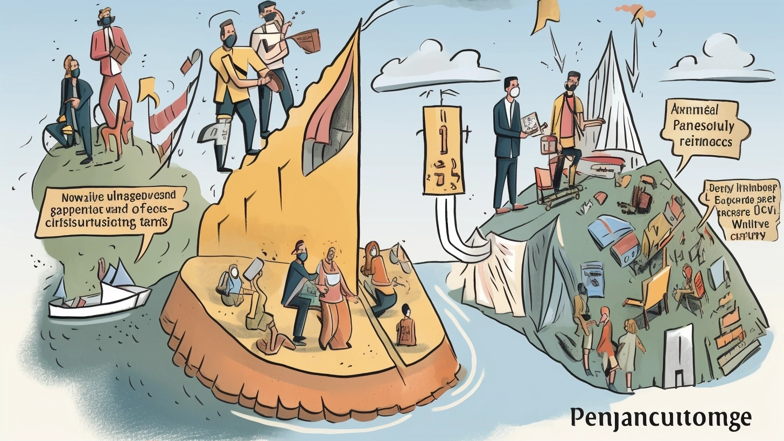
In this article, we present an effective policy for navigating the ongoing pandemic crisis that takes into account both public health and economic recovery. It offers practical solutions that can help stakeholders strike a balance between protecting public health and kick-starting economic growth.
1. Public Health Infrastructure: The first step in reopening the economy is to ensure that the public health infrastructure is robust and ready to handle any new outbreak. This includes testing, contact tracing, and timely isolation of infected individuals. Governments must also invest in personal protective equipment and ensure that healthcare workers are adequately protected to prevent a healthcare provider shortage. This will give the public confidence that they can return to work and public settings without the fear of a resurgence in cases.
2. Education and Outreach: Educating the public about the virus and its spread is critical to flatten the curve and keep people safe. Governments, health agencies, and local communities must work together to provide the necessary information for people to understand the risks and make informed decisions. This means providing accurate information to the public and addressing any misinformation that might be fueling fear and panic. The community must be empowered to take personal responsibility for their actions and to comply with guidelines established to protect their safety and the community.
3. Targeted Stimulus: Governments must prioritize stimulus programs that help vulnerable populations and small businesses that have been negatively impacted by the pandemic. This will help prevent economic inequality and promote shared prosperity. Targeted stimulus benefits such as the $1200 per person payment to individuals who meet the eligibility requirements, robust unemployment compensation, and support for small businesses to help cover payroll expenses allow consumers to cover necessary living expenses and promote consumer spending.
4. Supportive Policies: Governments must enact supportive policies that encourage social distancing in workplaces and public settings. This means policies that allow workers to work from home where possible, staggered work hours, and mandatory mask requirements. Businesses must be given flexibility in transitioning to these new policies to allow them to adjust to the new economic environment. Flexible leave policies can help give workers the time they need to seek medical attention or care for themselves or a family member, and can help minimize the spread of the virus.
5. Flexible Regulation: Governments must be flexible with regulation in the short term to allow for businesses to innovate and adapt to new economic challenges. Some regulations that may be suspended or modified include temporary tax relief, relaxed zoning laws to allow for more outdoor dining, and providing incentives for businesses moving to lower cost areas so as to minimize overhead expenses. These measures are critical to help businesses operate while still adhering to public health guidelines.
6. Digital Transformation: The pandemic has accelerated digital transformation in businesses and industries. Governments must develop and implement policies that promote investment in companies that are innovating and pivoting towards e-commerce and digital business models. Telecommuting and equipment delivery has increasingly become prevalent in many businesses as a result, it also means new infrastructure investments in high-speed internet and digital network improvements.
7. Investment in Public Infrastructure: Governments should undertake public infrastructure investments that spur economic activity and provide jobs, while also improving quality of life for citizens. Investments should target rural and underserved areas. Building affordable housing, upgrading highways and bridges, and repairing and maintaining public infrastructure are important elements of such investment programs.
8. Partnership and Collaboration: Finally, governments and industry must work together in a collaborative fashion to support their economic recovery efforts. Collaborating with industry groups and communities to identify economic development opportunities will be key to creating a strong foundation for long-term economic growth. Partnerships facilitate discussion, cooperation and collaborative decision-making that can lead to better solutions that address the challenges stakeholders face.
Conclusion:
The pandemic has revealed underlying weaknesses and injustices in our social, political, and economic systems. It is an opportunity to build back better and create a more equitable and resilient society. A resilient society provides comprehensive health care to all individuals regardless of social or economic status, creates economic opportunities for all, strengthens safety net programs, invests in public infrastructure, and optimizes the development of alternative economic sectors. By implementing these recommendations, stakeholders can help rebuild a stronger and more equitable economy while still protecting their communities from the pandemic threat. The pandemic has created a myriad of challenges to navigate, however, with a combination of policy solutions, we can support economic growth and an equitable recovery for all.
Comments
Post a Comment